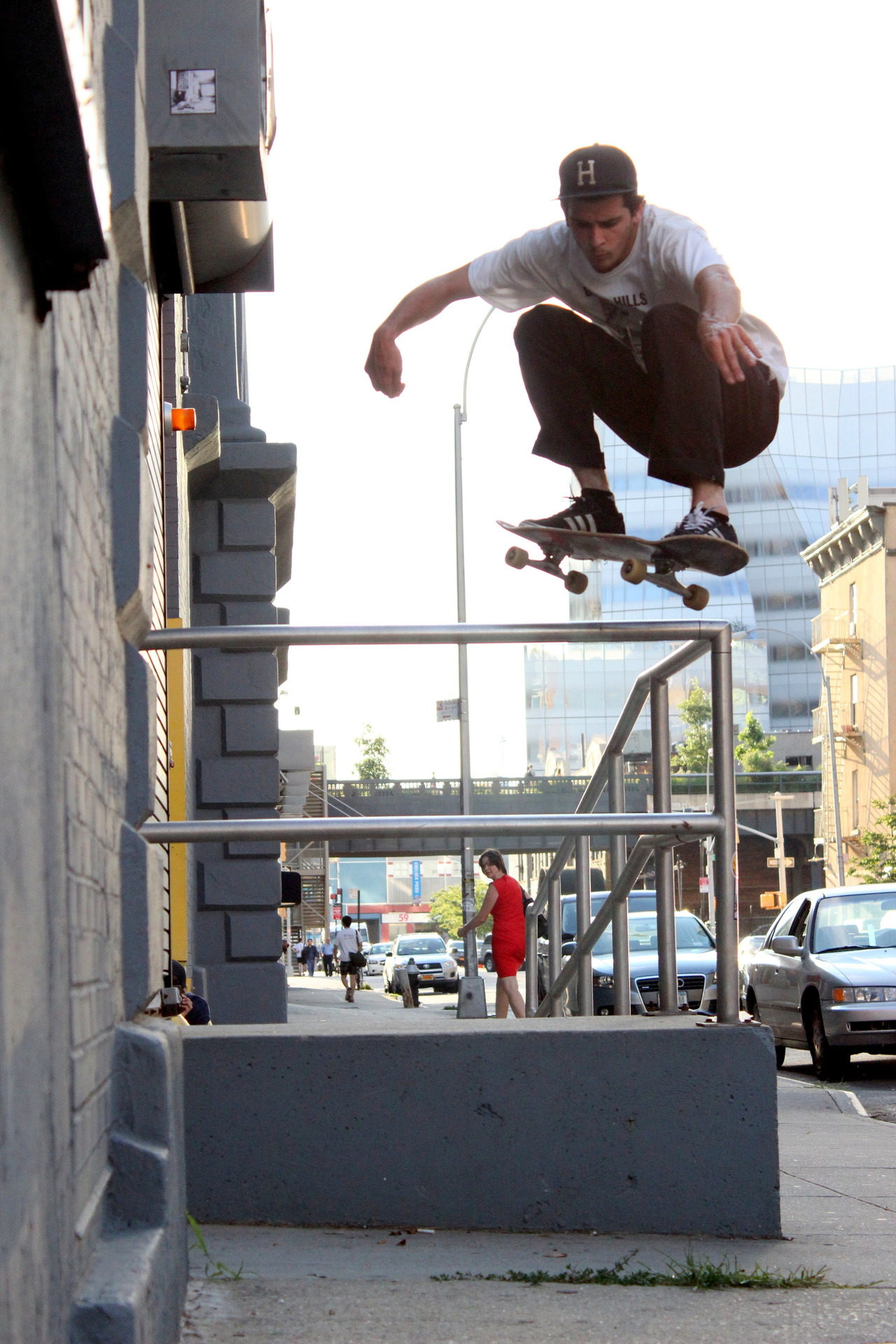 Regardless of the number and quality of skate parks available, skateboarders have a compelling need to skate the street: to jump stairs and fire hydrants, slide down handrails, assail monuments, grind ledges, and ride walls. This has sparked ongoing confrontations between skaters and authorities: security guards, home owners, police officers, and council members. What underlies this obsession with the ‘street’? Here are several possible clues:
Regardless of the number and quality of skate parks available, skateboarders have a compelling need to skate the street: to jump stairs and fire hydrants, slide down handrails, assail monuments, grind ledges, and ride walls. This has sparked ongoing confrontations between skaters and authorities: security guards, home owners, police officers, and council members. What underlies this obsession with the ‘street’? Here are several possible clues:1. Availability: It may be suggested that travelling to a skate park takes time and one may not even be available in some places or at certain times, such as at nights. The streets, however, are readily available.
2. Incidentally: Many skaters, especially those that don’t
yet drive, use their skateboard for transport and typically have their boards
with them much of the time. If they are already skating, surely they will use
the obstacles that come their way to perform tricks on and have some fun.
However, though these first two explanations
may be real reasons why people sometimes street skate, they fail to explain why
skateboarders will leave a skate park in order to skate a street spot. The
following explanations attempt to address this.
3. ‘Stolen
water tastes sweeter’: The Talmud explains that
people tend to have exciting pleasure when they benefit from things normally
prohibited to them. Skateboarding a set of stairs in a shopping complex may
therefore be more exciting than skateboarding the same sort of stairs at a
skate park.
4. Novelty:Skate parks are limited in the challenges
and obstacles they offer. The street however, has relatively limitless
opportunities for novelty, experimentation, and adventure.
 5. Conquest: Many skateboarders are also graffiti
writers/artists or associate with people so inclined. ‘Writers’, as they are
called, are obsessed with spreading their name – ‘tag’ – throughout the graffiti world; they seek recognition and
reputation. They also feel that they conquer and take ownership of a place
simply by labeling it with their signature or artwork.
5. Conquest: Many skateboarders are also graffiti
writers/artists or associate with people so inclined. ‘Writers’, as they are
called, are obsessed with spreading their name – ‘tag’ – throughout the graffiti world; they seek recognition and
reputation. They also feel that they conquer and take ownership of a place
simply by labeling it with their signature or artwork.
Many skateboarders have a similar attitude
in the sphere of skateboarding. By skating all sorts of difficult street spots
around his city, a skater may feel that other skaters who arrive at that spot
will recall how he did such and such a ‘gnarly’ trick there. He leaves his
invisible artwork for passersby to appreciate him by. Alternatively, he may
feel as though he partly ‘owns’ the place that he skated, after all, he did
conquer it.
6. Living
out of the box: There is a very special feeling when one
can view and utilize objects in unconventional ways. That is, in a way that
they were not intended to be used by their inventors. It’s as if one becomes a
co-creator by reinterpreting the object. Thus, when Marcel Duchamp entered a
urinal in an art exhibition (which he called ‘Fountain’) he did not create
anything new but merely re-framed a mundane object. Yet, this was deemed
artistic and opened people’s eyes to the beauty inherent even in the basest of
objects.
Along these lines, skaters have incredible
pleasure in perceiving and revealing the artistic potential that otherwise lies
hidden within banal street objects.
 7. Being
real:All people, whether conscious of it or not,
have a need to enter the arena of the ‘real world’ and thrive there; to confront
reality as it is, without escaping into the comforts of fiction and fantasy. In
this way, one validates himself as being real. When skating in a skate park, a skater
feels that he is escaping from the real world, entering into a space which is
designed for skateboarding, where the ramps, ledges, handrails, stairs, etc,
are not real but artificial and simulated – in a sense, fictional. The stairs
don’t really lead anywhere, one walks up them in order to jump down them. The
hand rail is not for holding onto when using stairs, it was made for grinding and boardsliding.
7. Being
real:All people, whether conscious of it or not,
have a need to enter the arena of the ‘real world’ and thrive there; to confront
reality as it is, without escaping into the comforts of fiction and fantasy. In
this way, one validates himself as being real. When skating in a skate park, a skater
feels that he is escaping from the real world, entering into a space which is
designed for skateboarding, where the ramps, ledges, handrails, stairs, etc,
are not real but artificial and simulated – in a sense, fictional. The stairs
don’t really lead anywhere, one walks up them in order to jump down them. The
hand rail is not for holding onto when using stairs, it was made for grinding and boardsliding.
As long as a skater feels he is not skating
in the real world, he feels he is escaping from it and thus not being real.
This is why many skaters see the skate park as a preparation for street
skating: for them, it amounts to flying lessons on a simulator in preparation
for actual flight.

No comments:
Post a Comment